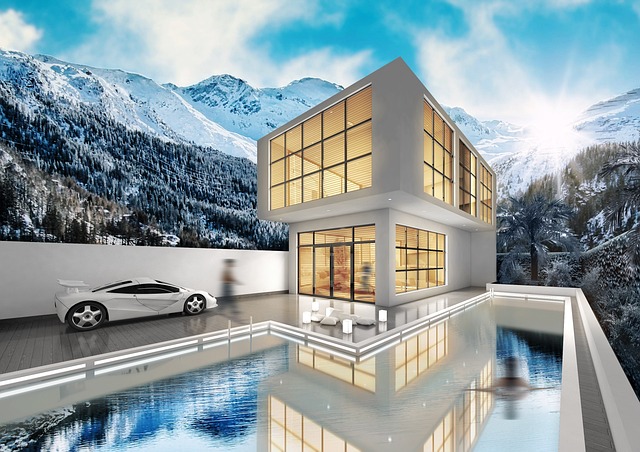CAD-based structural modeling transforms architectural analysis by combining 3D models with lighting simulations for precise day and night evaluations. This method optimizes design decisions, enhancing energy efficiency, visual comfort, and overall aesthetic appeal, while identifying structural weaknesses and ensuring long-term building durability.
In the realm of architectural assessment, combining structural analysis with visual appeal is paramount. This article explores innovative approaches using CAD-based structural modeling and advanced lighting simulations for comprehensive evaluations. From simulating day lighting to uncovering hidden structures under nighttime illumination, these techniques offer unprecedented insights. We delve into how dynamic light dynamics can enhance our understanding of a building’s integrity, ensuring both functionality and aesthetic excellence.
CAD-based Structural Modeling: Laying the Foundation
CAD-based structural modeling serves as the cornerstone for comprehensive day and night lighting simulations, offering a precise digital foundation upon which to build. This advanced technique leverages Computer-Aided Design (CAD) software to create detailed 3D models of structures, capturing intricate architectural details with remarkable accuracy. These models not only provide visual representations but also serve as data anchors for subsequent lighting analysis, ensuring every element, from structural components to ornamental features, is considered.
By integrating CAD into the evaluation process, researchers and engineers gain a powerful toolset to explore how light interacts with various surfaces, penetrates through openings, and casts shadows across different sections of the building throughout the day and night. This holistic approach facilitates informed design decisions, enhances energy efficiency by predicting lighting requirements, and ultimately contributes to the creation of well-lit, aesthetically pleasing spaces that cater to both functional and emotional needs.
Simulating Day Lighting: Enhancing Visual Analysis
Simulating day lighting in architectural and structural analysis offers a dynamic approach to enhancing visual assessment. By employing CAD-based structural modeling, professionals can recreate natural light conditions throughout the day, providing a detailed understanding of how structures interact with their environment. This process involves careful consideration of factors like sunlight angle, intensity, and shadow patterns, all of which significantly impact both the aesthetic appeal and functional performance of a design.
Such simulations allow for more informed decision-making regarding material choices, window placements, and overall layout, ensuring that the final product optimizes natural light utilization while maintaining visual comfort and energy efficiency. With these advanced tools, architects and engineers can effectively navigate the intricate relationship between structural elements and day lighting, fostering better design outcomes in both residential and commercial projects.
Nighttime Illumination: Unveiling Hidden Details
In the realm of CAD-based structural modeling, nighttime illumination emerges as a powerful tool for revealing hidden details within complex architectural designs. When structures are bathed in soft, strategic lighting during the dark hours, nuances previously obscured by daylit conditions come into stark relief. This technique is particularly valuable for engineers and architects who need to thoroughly evaluate each element of a building’s framework, from intricate structural supports to subtle aesthetic features.
By simulating night-time conditions, professionals can gain deeper insights into the interplay of light and shadow, enabling them to identify potential design flaws or areas needing reinforcement. Such simulations not only enhance visual understanding but also serve as crucial data points for decision-making processes, ultimately ensuring the safety and longevity of constructed works.
Evaluating Structural Integrity Through Light Dynamics
Evaluating a structure’s integrity and performance is a complex task, but integrating light dynamics into the analysis offers a unique perspective. By simulating day and night lighting conditions using CAD-based structural modeling, engineers can uncover potential design flaws or weaknesses that might be overlooked in static assessments. This approach allows for a comprehensive understanding of how structures interact with their environment, particularly regarding natural light exposure and its variations over time.
With detailed simulations, researchers can predict the behavior of sunlight, shadows, and overall illumination throughout different seasons and times of day. This data provides valuable insights into structural performance, especially in terms of energy efficiency, user comfort, and long-term durability. By considering light dynamics, architects and engineers can make informed decisions to optimize designs for both aesthetic appeal and functional effectiveness.
The integration of day and night lighting simulations into CAD-based structural modeling offers a powerful tool for engineers and architects. By enhancing visual analysis and revealing hidden structural details, this technique enables more comprehensive evaluations of integrity and performance. Through dynamic light dynamics, professionals can optimize designs, ensuring not only aesthetic appeal but also practical functionality across varying lighting conditions. This innovative approach is transforming the way we assess and improve structural integrity in today’s built environment.
